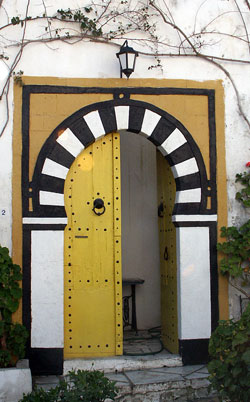
Cultural Spot ...
A l e p p o
Aleppo, the largest city in Syria is situated about 350km north of Damascus, 120km inland from the Mediterranean Sea and 45km east of the Syrian-Turkish border. It is one of the oldest continuously inhabited cities in the world. The city has been inhabited perhaps as early as the 6th BC. Hence, Aleppo is an important UNESCO Cultural World Heritage sites.
Located at the crossroads of several trade routes since the 2nd BC. The city's significance in history has been highlighted by its location at the end of the Silk Road which passed through central Asia and Mesopotamia.
The diverse mixture of buildings including the Great Mosque founded under the Umayyads and rebuilt in the 12th century; the 12th century Madrasa Halawiye, which incorporates remains of Aleppo's Christian cathedral, together with other mosques and madrasas, suqs and khans represents an exceptional reflection of the social, cultural and economic aspects of what was once one of the richest cities of all humanity.
The monumental Citadel of Aleppo, rising 50 m above the suqs, mosques and madrasas of the old walled city, is testament to Arab military might from the 12th to the 14th centuries. With evidence of past occupation by civilizations dating back to the 10th century B.C., the citadel contains the remains of mosques, palace and bath buildings.
Aleppo is famous for its mosques, madrasas (the Fardos Madrassa is one of the outstanding religious buildings) and churches. It is still a very active Arab commercial city.

Narrow alley at the Armenian quarter in Jdeydeh, early 17th century

The Great Mosque
The Jami al Kabir entrance (Umayyad or Great Mosque) is opposite an old Koranic school, the al Halawyah Madrassa, installed in the former Byzantine cathedral erected at the command of the Empress Helena. The Great Mosque was founded in the early Islamic period, but there is little to see that dates from that time.

Narrow alley at the Armenian quarter in Jdeydeh, early 17th century
The Great Mosque
The Jami al Kabir entrance (Umayyad or Great Mosque) is opposite an old Koranic school, the al Halawyah Madrassa, installed in the former Byzantine cathedral erected at the command of the Empress Helena. The Great Mosque was founded in the early Islamic period, but there is little to see that dates from that time.
Tawhid mosque with Saint George's church in the background
St George's Cathedral stands behind a labyrinth of narrow streets on a tiny square. The postern gate in the middle of the ramparts (Bab Antakia) is the Antioch Gate. Beyond there are many important monuments - the little domed Byzantine church converted into a mosque

Churches of Jdeydeh Christian quarter: the Forty Martyrs Armenian Apostolic Cathedral, the Dormition of Our Lady Greek Orthodox church, Mar Assia Al-Hakim Syrian Catholic church, the Maronite Saint Elias Cathedral, the Armenian Catholic Cathedral of Our Mother of Reliefs and the Melkite Greek Catholic Cathedral of Virgin Mary.
St Elias Cathedral
The city was home to 177 hammams during the medieval period, until the Mongol invasion when many vital structures in the city were destroyed. Nowadays, roughly 18 hammams are operating in the old city.
Hammam al-Nahhaseen
Khan Al-Shouneh

The city's strategic trading position attracted settlers of all races and beliefs who wished to take advantage of the commercial roads that met in Aleppo from as far as China and Mesopotamia to the east, Europe to the west, and the fertile crescent and Egypt to the south. The largest covered souq-market in the world is in Aleppo, with an approximate length of 13 kilometers.
Souq al-Madina
Souq az-Zirb from the Mamluk period
* Reference: wikipedia & UNESCO
